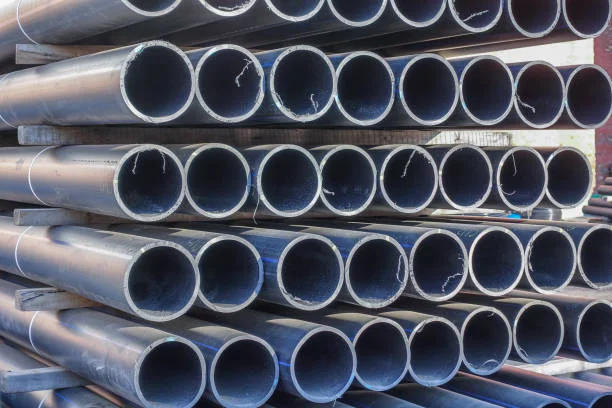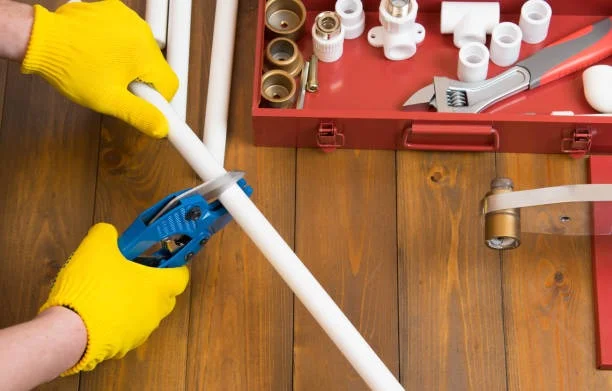HDPE pipes from Newtech Pipes are the optimal solution for infrastructure projects, offering durability, corrosion resistance, and a longer lifespan. Lightweight and cost-effective, they outperform traditional materials like concrete and metal, providing seamless installation and minimal maintenance. Their smooth inner surface ensures optimal functionality, making them ideal for sewerage systems and various infrastructure applications. Choose HDPE pipes for sustainable, efficient, and resilient infrastructure development.
HDPE Pipes in Infrastructure Development
Infrastructure development is the backbone of any nation’s growth and it is essential to have reliable and durable products that can ensure sustainability and longevity. HDPE pipes from Newtech Pipes are the perfect solution for any infrastructure project as they are lightweight, resistant to corrosion, and provide a longer lifespan. Moreover, they are cost-effective and require less maintenance than other pipes. With these features, HDPE pipes from Newtech Pipes are the ideal choice for any infrastructure development.

A brief explanation of HDPE pipes
HDPE (High-Density Polyethylene) pipes are a type of plastic pipe used for various applications in infrastructure development. They are made from a durable and flexible material that offers a wide range of benefits compared to traditional materials like concrete or metal.
One of the key advantages of HDPE pipes is their corrosion resistance. Unlike metal pipes, which are prone to rust and decay over time, HDPE pipes can withstand exposure to moisture and other harsh environmental conditions without deteriorating. This makes them ideal for use in sewerage systems, where constant contact with water and chemicals can cause significant damage to other pipe materials.
In addition to their corrosion resistance, HDPE pipes are also lightweight. This makes them easier to transport and install, reducing labor costs and improving overall project efficiency. Their flexibility allows for easier maneuverability around obstacles and tight spaces, further simplifying the installation process. Furthermore, HDPE pipes have a smooth inner surface, which minimizes friction and allows for a smoother flow of fluids or waste materials.
Another notable advantage of HDPE pipes is their longevity. These pipes have a lifespan of up to 100 years, ensuring the longevity of infrastructure projects. This not only reduces the need for frequent repairs and replacements but also contributes to sustainable development by minimizing the use of natural resources.
HDPE pipes also offer cost-effectiveness in infrastructure development. Their durability and longevity translate into long-term savings by minimizing maintenance and repair costs. Additionally, the lightweight nature of these pipes reduces transportation costs and simplifies handling and installation, further contributing to cost savings.
Importance of infrastructure development
Infrastructure development plays a crucial role in the growth and progress of any nation. It is the foundation on which societies thrive and prosper. The importance of infrastructure development cannot be overstated, as it impacts various aspects of our lives, from transportation and communication to healthcare and education.
One of the key aspects of infrastructure development is the construction and maintenance of sewerage systems. HDPE (High-Density Polyethylene) pipes are vital in this area. These pipes offer a wide range of benefits that make them essential for the success of infrastructure projects.
Firstly, HDPE pipes are highly durable and resistant to corrosion. This is particularly important for sewerage systems, as they are constantly exposed to moisture and chemicals that can cause significant damage to other pipe materials. The resistance of HDPE pipes to corrosion ensures that they can withstand the harsh conditions of sewerage systems, providing a reliable and long-lasting solution.
Moreover, HDPE pipes are lightweight, making them easy to transport and install. This reduces labor costs and improves the overall efficiency of the project. The flexibility of these pipes allows for easier maneuverability around obstacles and tight spaces, simplifying the installation process further.
The longevity of HDPE pipes is another crucial factor in the importance of infrastructure development. These pipes have a lifespan of up to 100 years, ensuring the longevity and sustainability of infrastructure projects. This not only reduces the need for frequent repairs and replacements but also contributes to sustainable development by minimizing the use of natural resources.
Additionally, HDPE pipes offer cost-effectiveness in infrastructure development. Their durability and longevity translate into long-term savings by minimizing maintenance and repair costs. The lightweight nature of these pipes also reduces transportation costs and simplifies handling and installation, further contributing to cost savings.
What are HDPE Pipes?
HDPE pipes, also known as High-Density Polyethylene pipes, are a type of plastic pipe that is widely used in infrastructure development. These pipes are made from a durable and flexible material, offering numerous benefits compared to traditional pipe materials like concrete or metal.
One of the key features of HDPE pipes is their corrosion resistance. Unlike metal pipes that can rust and deteriorate over time, HDPE pipes can withstand exposure to moisture and harsh environmental conditions without any degradation. This makes them the perfect choice for sewerage systems, where constant contact with water and chemicals can cause significant damage to other pipe materials.
Another advantage of HDPE pipes is their lightweight nature. These pipes are much lighter than concrete or metal pipes, making them easier to transport and install. The reduced weight not only simplifies handling but also helps in reducing labor costs and improving overall project efficiency. Furthermore, the flexibility of HDPE pipes allows for easier maneuverability around obstacles and tight spaces during installation, making them a preferred choice for complex infrastructure projects.
In addition to their corrosion resistance and lightweight properties, HDPE pipes also have a smooth inner surface. This smoothness minimizes friction and allows for a smoother flow of fluids or waste materials. It ensures that there are no obstructions or blockages within the pipe, enhancing the overall efficiency of the infrastructure system.
Furthermore, HDPE pipes have an impressive lifespan of up to 100 years. This longevity ensures the durability and sustainability of infrastructure projects, reducing the need for frequent repairs and replacements. This not only saves costs but also contributes to the preservation of natural resources, making HDPE pipes an environmentally friendly choice for infrastructure development.
Overall, HDPE pipes are a reliable and durable solution for any infrastructure project. Their resistance to corrosion, lightweight nature, smooth inner surface, and longevity make them the ideal choice for sewerage systems and other infrastructure developments. By choosing HDPE pipes, developers can ensure the longevity, efficiency, and sustainability of their projects.
Advantages of HDPE Pipes in Infrastructure Development
HDPE pipes offer numerous advantages in infrastructure development, making them a preferred choice for various applications. These pipes provide significant benefits in terms of durability, cost-effectiveness, and sustainability, making them an ideal solution for sewerage systems and other infrastructure projects.
One of the key advantages of HDPE pipes is their corrosion resistance. Unlike metal pipes that are prone to rust and decay, HDPE pipes can withstand exposure to moisture and harsh chemicals without deteriorating. This corrosion resistance ensures the longevity and reliability of sewerage systems, minimizing the need for frequent repairs and replacements.
Additionally, HDPE pipes are lightweight, making them easy to transport and install. Their reduced weight simplifies handling and reduces labor costs, improving overall project efficiency. This is especially beneficial for infrastructure projects that require the installation of large quantities of pipes.
Moreover, the flexibility of HDPE pipes allows for easier manoeuvrability around obstacles and tight spaces during installation. This flexibility ensures a seamless and efficient installation process, further enhancing the overall project efficiency.
Another advantage of HDPE pipes is their smooth inner surface, which minimizes friction and allows for a smoother flow of fluids or waste materials. This reduces the risk of blockages or obstructions within the pipes, ensuring optimal functionality of the sewerage system.
HDPE pipes also offer cost-effectiveness in infrastructure development. Their durability and longevity translate into long-term savings by minimizing maintenance and repair costs. Additionally, the lightweight nature of these pipes reduces transportation costs and simplifies handling and installation, further contributing to cost savings.
Furthermore, HDPE pipes contribute to sustainable development by minimizing the use of natural resources. Their impressive lifespan of up to 100 years ensures the durability and sustainability of infrastructure projects, reducing the need for frequent replacements and conserving valuable resources.
HDPE pipes provide numerous advantages in infrastructure development. Their resistance to corrosion, lightweight nature, smooth inner surface, and cost-effectiveness make them the ideal choice for sewerage systems and other infrastructure projects. By choosing HDPE pipes, developers can ensure the longevity, efficiency, and sustainability of their infrastructure developments.
The perfect solution for any infrastructure project, HDPE pipes from Newtech Pipes offer durability, corrosion resistance, and a longer lifespan, making them ideal for sewerage systems and other applications.
Newtech Pipes remains at the forefront of providing top-quality HDPE pipes, ensuring reliable and long-lasting solutions for sewerage systems, water distribution, and industrial projects. Choose Newtech Pipes for your infrastructure needs and experience the difference in your projects today.
Case Studies on HDPE Pipe Implementation
To further emphasize the benefits of HDPE pipes in infrastructure development, let’s take a look at some real-life case studies showcasing the successful implementation of HDPE pipes in sewerage systems.
In a large city with a rapidly growing population, the local government faced the challenge of upgrading and expanding its sewerage infrastructure. They opted to use HDPE pipes for the project due to their durability and resistance to corrosion. The installation process was quick and efficient, thanks to the lightweight nature and flexibility of HDPE pipes. The project was completed on time and within budget, saving the city significant costs in labor and maintenance. The longevity of HDPE pipes ensured that the sewerage system would remain functional and reliable for decades to come.
In another case study, a coastal town was facing issues with its existing sewerage system due to corrosion of the metal pipes. The local government decided to replace the corroded pipes with HDPE pipes, taking advantage of their corrosion resistance. This solution proved to be highly successful, as the HDPE pipes were able to withstand the harsh coastal environment without deteriorating. The town experienced a significant decrease in maintenance costs, allowing it to allocate resources to other pressing infrastructure needs.
One more case study involved a rural area with limited access to transportation and high labor costs. The implementation of a sewerage system seemed like a daunting task, but the use of HDPE pipes made it feasible. The lightweight nature of HDPE pipes made transportation and installation easier and more cost-effective. The project was completed in a shorter time frame, thanks to the flexibility of the pipes, which allowed for easy maneuverability around challenging terrain. The community now enjoys a reliable sewerage system that meets their needs without straining their resources.
These case studies demonstrate the practical benefits of using HDPE pipes for sewerage systems in infrastructure development. The corrosion resistance, lightweight nature, and flexibility of HDPE pipes provide cost-effective solutions that ensure the longevity and reliability of sewerage systems. By choosing HDPE pipes, infrastructure developers can confidently implement projects that are efficient, sustainable, and resilient.
Conclusion Of HDPE Pipes in Infrastructure Development
In conclusion, HDPE pipes from Newtech Pipes are a game-changer in infrastructure development, especially for sewerage systems. These pipes offer a wide range of benefits that make them the perfect choice for any project. Their corrosion resistance ensures the durability and longevity of the sewerage system, minimizing the need for frequent repairs and replacements. The lightweight nature of HDPE pipes makes them easy to transport and install, reducing labor costs and improving overall project efficiency. Additionally, their smooth inner surface allows for a smoother flow of fluids or waste materials, preventing obstructions and ensuring optimal functionality.

Continuing our dedication to innovation and excellence in infrastructure development, Newtech Pipes remains at the forefront of providing top-quality HDPE pipes for a wide range of applications. With a focus on durability, sustainability, and cost-effectiveness, our HDPE pipes offer unparalleled performance, ensuring reliable and long-lasting solutions for sewerage systems, water distribution, stormwater management, and industrial projects. Backed by our commitment to customer satisfaction and backed by years of industry experience, Newtech Pipes is your trusted partner for all your infrastructure needs. Choose Newtech Pipes and experience the difference in your infrastructure projects today.
Frequently Asked Questions About HDPE Pipes in Infrastructure Development
Q1: How do HDPE pipes contribute to infrastructure development?
A1: HDPE pipes play a crucial role in infrastructure development by providing a durable and versatile solution for various applications such as water supply, sewage systems, and gas distribution.
Q2: What makes HDPE pipes a sustainable choice for infrastructure projects?
A2: HDPE pipes are sustainable due to their recyclability, longevity, and resistance to corrosion. Choosing HDPE promotes environmentally conscious infrastructure development.
Q3: How do HDPE pipes compare to traditional materials in infrastructure projects?
A3: HDPE pipes offer advantages over traditional materials like PVC and metal pipes. They are flexible, resistant to corrosion, and can adapt to challenging terrains, providing a reliable and cost-effective solution.
Q4: Can HDPE pipes be used in diverse infrastructure applications?
A4: Absolutely. HDPE pipes are versatile and suitable for a wide range of infrastructure applications, including water distribution, sewer systems, stormwater management, and industrial projects.
Q5: How does the flexibility of HDPE pipes benefit infrastructure development?
A5: The flexibility of HDPE pipes allows for easy installation around obstacles and adapting to varying terrain. This flexibility minimizes the need for extensive excavation and reduces installation costs.
Q6: Are HDPE pipes resistant to chemical reactions in industrial applications?
A6: Yes, The Cheapest HDPE pipes exhibit excellent resistance to chemical reactions. They are suitable for conveying various substances in industrial settings without compromising the integrity of the pipes.

